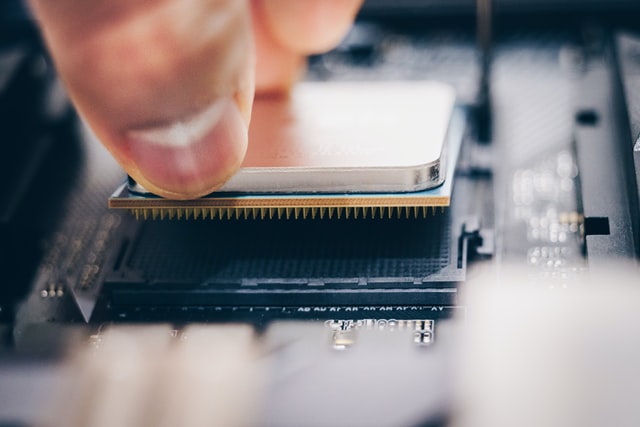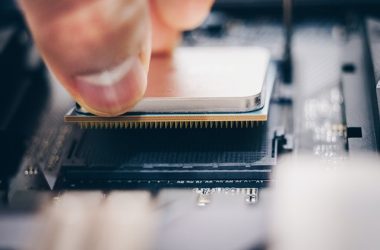The CPU lies at the heart of your computer and is single-handedly responsible for executing anything and everything you want your computer to run. Currently, three companies manufacture processors, Intel, AMD, and Apple.
Similar to the RAM and the GPU, there are a lot of numbers and specifications regarding a CPU that you should understand before you zero in on the processor for your PC. Depending on the budget of the CPU, these numbers change and hence the performance of the processor. The CPU specifications decide its compatibility with other PC components like the motherboard, RAM and GPU.
Did you know that the performance of a processor depends on the various specifications of the CPU? The CPU is the brain of the computer, and hence you must choose a CPU best suited for your needs, and for that, you need to understand the most common specifications of a CPU.
These specifications could be overwhelming for those who are not deeply involved in the PC or laptop industry. Hence, today we will look at some of the essential specifications of a CPU that would help you choose the best processor if you are building a PC yourself or buying a pre-built unit.
Table of Contents
Clock Speed
Average modern processors come with a clock frequency of around 3.00-4.00 Gigahertz or GHz. A processor’s clock frequency or speed is the number of cycles performed every second. Hence a 3.5GHz processor can do 3.1 billion cycles in one second, where a single cycle is defined by the period where a signal goes from low to high and repeats itself to complete the cycle.
It is not best to compare clock speeds alone while choosing a processor and more so when the contenders are from a different generation. Other factors are at play here, such as manufacturing process and newer architecture that would enable a recent processor with lower clock speed to outperform an older generation processor with considerably higher clock speed.
Turbo Speed
Intel and AMD allow their CPUs to increase the clock speed and operate at higher than their typical frequencies for a temporary boost in performance when needed. Intel calls it Turbo Boost, while AMD uses the moniker Turbo Core.
During this boost, an increase in voltage is auto-applied to the processor, increasing the clock speed of some of its cores. Between the various programs we run, some are memory intensive, some are GPU intensive, and some excel in the presence of a fast CPU. Turbo Core or Boost is a solution that aims to improve the processor’s speed as the workloads increase. This extra speed could be a game-changer in single-threaded tasks where only one core is used as the processor intelligently shifts the load onto the boosted core. AMD Ryzen 5 3600, for example, operates at a base clock speed of 3.6GHz but can go up to 4.2 with Turbo Core Boost.
Keeping in mind the nature of laptops that are heavily dependent on their batteries, Turbo Boost allows laptops to go all day with minimum usage and yet be ready for occasional heavy use. Running at a lower base clock allows laptops in particular to be more energy efficient as less heat is produced and less power is consumed. During heavy workloads, the CPU can dynamically increase its clock speed to compensate as per requirements.
This feature is enabled by default in both Intel and AMD but has a toggle switch in BIOS options if you want to disable it while overclocking.
Core Count
Originally, CPUs were manufactured with a single core that did all the work. Eventually, it was realized that single-core was not enough with heavy workloads and it could no longer handle complex strings of tasks. As for the solution, more cores were added where each core acted as a new processor. Hence with two cores, it was similar to having the performance of two CPUs.
Unlike older applications which were designed with algorithms that could not use multiple cores of the processors, current applications are much more agile at harnessing the power of multiple cores and being fast and efficient in the way they function.
Currently, mainstream CPUs come with at least two cores which can increase to 8 or 12 with an increase in prices. These processors are high-speed and can execute multiple task streams at once in a jiffy.
Hyperthreading/Multi-Threading
Threads represent virtual cores a processor can simulate. In most multi-threading enabled processors, there is double the number of threads as cores. Intel calls it Hyper-Threading to achieve multi-threading in a processor. More the number of cores and threads in a processor more efficient the processor is at handling different tasks.
Hyperthreading or multi-threading makes the computer think that the threads are different processors of their own. Hence a processor with four cores and eight threads would seem to the computer like the processor has eight cores.
Hyperthreading allows a single core to work simultaneously on a second command or task string, depending on the executed command. It can increase the performance of your PC by leaps and bounds. Hyperthreading, however, becomes valuable only when you are multi-tasking as regular web browsing or streaming are simple tasks for which the physical core is powerful enough.
Cache Memory
Every processor comes with a cache memory denoted by “L” and named L1, L2, and L3. Cache memory is a volatile short-term memory that allows high-speed access to data to the cores in the processor. The cache memory is built in the processor itself, starting with an L1 cache independent for each core, a shared L2 cache memory, and the L3 is almost always a shared cache memory.
Current generation processors come with a substantial L3 cache so that the cores can have a large pool of shared memory to access data from. Typically, the L1 cache could be 256KB-512KB while the L2 cache memory could be in the region of 10 MB while the L3 cache is the largest and could go to as high as 32MB.
Memory Support
Another important specification of processors is the RAM they support. Physical memory is responsible for how well you can multi-task, and hence the memory should be compatible with the processor. DDR4 is the latest standard now that all modern CPUs support, and in addition to DDR4, there are a few other specifications that you should match and ensure cross-compatibility between the CPU, motherboard, and RAM itself.
Memory Channel
While choosing the memory for your PC, you should first check the CPU support list available in the booklet with the CPU or the manufacturer’s website. A host of different memories are available with various features and terminologies such as ECC-Non ECC, Buffered-Unbuffered, Single Channel -Dual-Channel, etc. Most modern CPUs and motherboards support Dual-Channel memory which opens up an additional lane via the memory controller for the CPU to communicate with the RAM resulting in faster overall performance.
Memory Speed
Memory speed is an essential factor to consider as there needs to be cross-component compatibility with how much speed your CPU can support, your RAM and go up to, and your mainboard can handle. Memory speed is measured in MHz, and currently, DDR4 memories can go up to 3200MHz or Mb/s.
CAS Latency/ Memory Timings
Memory timings refer to the delay in time between a data request to the memory and when it becomes available. A fast PC is a culmination of several hardware and software-related factors. A single component cannot single-handedly transform your PC for the better (the reverse, however, is true as it is well-known that a PC is as fast as its slowest component.)
If your CPU supports specific RAM timings, you should not pick memory sticks that operate on different latency timings.
TDP (Thermal Power Design)
With the CPU being the brain of a computer, every specification is critical. The TDP is the heat generated by the CPU under load. Budget CPUs with lesser cores and threads and lower clock speeds come with a lower TDP, such as 65 watts (in desktops) and around 25 watts (in laptops.) They generate less heat, and to some extent, users mistake it for the power consumption of the CPU.
The CPU’s TDP is important as the power supply unit should deliver the required wattage your components need.
Mainstream desktop CPUs can easily go above 100 watts with their TDP and your power supply unit should deliver stable power at all times.
Socket Type
Every CPU has a socket specification assigned to it that should match with the mainboard. Socket types in Intel change a lot with every generation of CPUs, while it is somewhat a bit less volatile with AMD. 10th and 11th Gen Intel processors fit into a Land Grid Array/LGA 1200 socket. Land Grid Array sockets are the processor rests on the pins on the socket. Data processing happens through this simple contact.
Another variation with sockets is PGA or Pin Grid Array sockets that are common with AMD processors where the sockets have protruding pins standing upright and go into the concurrent holes of the processor. Intel’s next iteration of CPUs would need LGA 1700 socket, while all mainstream Ryzen processors since their advent are compatible with AM4 socket motherboards.
Internal Graphics
Unless you are a gamer, you might not buy a discreet graphics card for your PC. Graphics cards are required to process visual elements of an application. Games are complex applications that need powerful graphics processors. However, even other than games, there are innumerable uses of graphics processing during day-to-day computer operations. Hence many CPUs now come with an in-built graphics processor.
Every computer would need at least some graphics capabilities for it to display everything on the monitor. In some cases, the mainboard has an integrated, on-board graphics chips like the Nvidia MX chipsets. Some CPUs are equipped for casual gaming and if you are a casual gamer or a casual content creator, you might not need a powerful GPU, but your CPU should have a graphics processor in-built to process the visuals.
Chipset
The chipset is the final piece of the puzzle, and though it is a term confined to the motherboard, there are a lot of features in the chipset that would need the CPU’s support to work. A chipset handles how data should flow between the various components of a PC. There are multiple chipsets, each with its own sub configuration, all of which should be supported by the CPU.
Chipset are bound to a CPU and a single processor could be compatible with many chipsets.PCI Express, for example, is a feature that is both chipset and CPU dependent. If the CPU does not support PCI x16 ver. 4.0, then you would not be able to reap the benefits of the latest GPUs in a version 4.0 PCI x16 slot on the motherboard.
Conclusion
Unlike the GPU, the CPU is the most crucial part of your PC without which the computer is as good as dead, and hence other components should be completely compatible with the processor lest any unwanted complications arise post you build your PC. Most laptops come with factory configured features, and you can do little to check the compatibility with them. In most cases, it is not even required as the manufacturer ensures compatibility in the factory itself. Every specification is essential and critical when it comes to the CPU. It is vital that you consider the CPU as a whole rather than focusing on a specific specification.
CPU Specs Explained – FAQ
Are certain specifications of a CPU absent or present as per budget?
No, every CPU comes with all the specifications mentioned above, and it is utmost essential for you to consider each of them irrespective of the price of your CPU.
Which CPU is better, Intel or AMD?
Since its advent, AMD had been underdogs in the CPU market with unoptimized performance due to inefficient architectures. Since the launch of Ryzen processor with Zen architecture, they have steadily gained market share and have started giving Intel a run for their money. You can choose either right now as both Intel and AMD have some excellent CPUs in their lineup.
Is hyperthreading/multi-threading the norm?
Hyperthreading is where there are two threads per CPU core. There are plenty of CPUs, even some of the latest ones that are not hyperthreading enabled and have just one thread per core. Expect heavy multi-tasking to take a hit with those CPUs. However, if you are a gamer, such CPUs could be good for you as most games even today rely on single-core performance.
How is CPU cache memory valuable?
CPU cache memory is a small memory component built inside the CPU that stores data for faster access in the future. While working on complex programs or multi-tasking, the CPU intelligently switches and reassigns the available cores for tasks to bring the outcome in the shortest time possible. During this activity, the cores use the cache memory to access the information about the tasks. Lesser cache memory would mean newly assigned cores would need to access this memory multiple times, leading to longer wait times.





